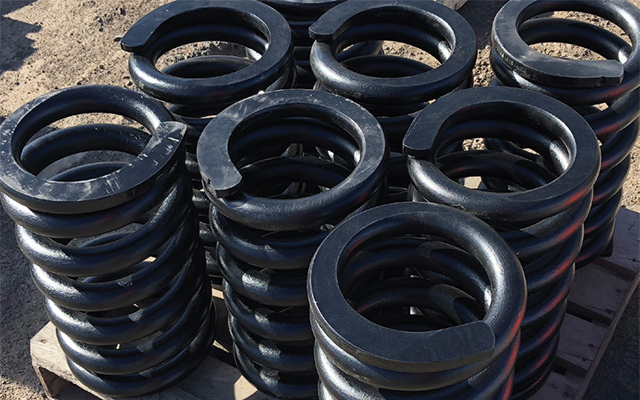
Poor motion in vibrating screens and feeders can occur for many reasons, but one is arguably the easiest to prevent and yet seems the least understood – the adverse effect of support springs (the springs on which the machine sits) behaving differently from one side of the machine to the other. The motion of the equipment will vary between the left and right sides, increasing the internal stresses within the machine, reducing its service life. It will become a greater challenge to maintain.
What do support springs do? They allow free movement of the vibrating machine and isolate most of the unit’s vibration from its supporting structure. Something that is not broadly understood, however, is that they also magnify the vibration of the machine. While typically only by a few per cent, this magnification (caused by a dynamic response of the screen’s mass combined with the springs) occurs at each corner and will only be equal around the unit if the compression on each of the springs is equal.
A difference in spring compression (between the left and right side on the equipment) means a difference in the amplitude of vibration (from one side to the other), which leads to excessive internal stresses within the machine body that are different to those typically considered in the machine design. To worsen matters, a variation in spring compression (ie spring heights) forces a slight twist into the machine, creating yet another dynamic response that contributes to these adverse internal stresses!